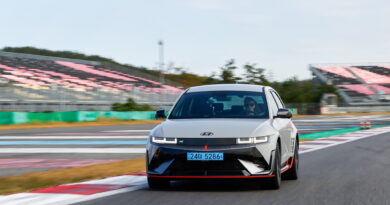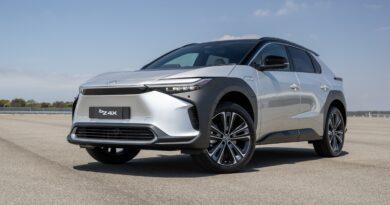The worst thing about owning an electric vehicle in Australia isn’t getting any better. In fact, it’s getting worse | Opinion
I know we’re all rushing to order our own BYD Atto3, Tesla Model 3 and Model Y, Kia EV6 or Hyundai Ioniq 5. And, on the whole, that’s great news for the electric vehicle industry, and the planet. But the worst thing about owning an electric vehicle in Australia isn’t getting any better. In fact, it’s getting worse.
But honestly, has there ever been a slower or more frustrating rollout of a new technology than electric vehicles? Look at the smart phone, one minute we were all happy playing Snake and sending emoticons made out of semicolons and the next, sadly, we were all semi-pro paparazzi and waving selfie sticks.
Or consider Chat GPT, launched less than a year ago and already on millions of smart phones and being used to replace journalists (spoiler alert, no, I didn’t use it to write this article) and to shrink or destroy the critical faculties of billions of students.
READ MORE: Charging an electric vehicle in Australia is about to get easier
READ MORE: Tesla begins unlocking Supercharger sites for all EVs
READ MORE: EV charging while driving? It’s getting closer…
Yes, more and more new electric vehicles seem to be arriving every week, from Dolphins to Tiggos (and with names like that, Disney’s first EV can’t be far away), and they’re even becoming more affordable, thanks to Chinese brands like BYD, GWM and MG, but really, this is the equivalent of millions of iPhones being brought onto the market 16 years ago and Apple deciding only to put chargers in one box out of 100.
To be frank, charging infrastructure is keeping up with EV sales, and preparing for an electric future, at roughly the same ratio that America’s gun laws are keeping up with its gun sales, or Peter Dutton’s popularity is tracking his ego.
It remains baffling to me just how few EV chargers there are in our major cities, not to mention how sparse they are outside them. Our office is in an inner-city suburb of Sydney that is flocked with Teslas, votes Green at State level and has an average income that would make your eyes water, and yet it has, last time I looked, Zero EV charging stations.
Yes, you can argue that people with that much money will have their own chargers installed at home, but for one thing, only the very ritziest houses in suburbs like that have garages or off-street parking, so it still doesn’t work for most people (I met one EV owner who drives to a shopping centre 2km away, leaves the car there and walks home an back, because it’s the only option he’s got – imagine how shitty his day is when all three of those chargers, yes, just three, are taken, or two are broken).
And for another, it’s all fine and well to have an EV charger at your house – I have one myself – but it doesn’t mean you can drive from Sydney to the Snowy Mountains and back. I pondered doing just that recently, but then realised it would ruin my holiday; it’s just too hard. I recently tried to get to Canberra and back in an EV and that was stressful enough (LINK HERE to earlier story).
What struck me then, and has not changed since, is that we need a ring of EV charges at the edge of each major city – just as there are service stations now – that people struggling to make it home can top up at. But then, we just need a lot more chargers generally, and a system that fixes the ones that are broken, which seem to be a lot.
While it’s tempting to think that it’s just us here in Australia who have our heads in the sand on this issue, I was recently driving the new Rolls-Royce Spectre EV at its global launch in California and I spoke to journalists from around the world, all of whom said the same thing – EV sales are taking off and charger infrastructure is moving slower than a dead snail.
Apparently in the UK you see Teslas etc everywhere, but often they’re queued up at charging stations waiting their turn, with their drivers looking far less smug than usual.
I expected my US colleagues to be more upbeat, certainly you do see a lot of chargers in fast-food carparks and shopping mall ones, too, but they pointed out that while they do have more chargers, they also have massively more EVs.
So what’s the answer? Ampol is getting on board, gradually, by putting chargers on its forecourts, and the ROI on people buying expensive coffee and chocolate while they wait 30 to 45 minute for a charge might be tempting, but service stations only have so much space, and the real estate they’re on tends to be expensive.
No, what we really need, the only thing that will make it work, is massive investment by governments. And one person in the industry who’s been calling for this to happen for a while is Damien Meredith, the no-nonsense CEO of Kia Australia.
His argument, which he will tell you in loud terms, has been for some time that we are spending our money on the wrong things. He points out that anyone who can spend more than $40,000, and realistically more often over $60K, on a new EV does not need a cash incentive from the government.
“Those incentives are nothing more than middle-class welfare, those people don’t need the money, they can afford it, and they’re going to buy an EV anyway, because they’ve decided they want one, so what I’d much, much rather see the Government spending our tax dollars on is investing in charging infrastructure, and lots of it, because that’s what we need,” Meredith insists.
And, while I thought the only way to go was to follow the success of Norway, which is famous for building its massive EV market through incentives, what he’s saying actually makes a lot of sense. And someone clearly needs to do something, because every time I get one of those new Uber Greens, it’s the same story from the driver – “charging is an expletive deleted nightmare”.
Maybe I’ll go and ask Chat GPT how to fix the problem.




Its amazing that all these new servos & roadhouses are missing the boat by not having some charge points for ev vehicles. As an owner of a tesla we like to stop for a toilet break, coffee, food drinks for the kids. Having a bit of time means we browse the retail shelves & spend more. They are missing the boat by ignoring the ev customers